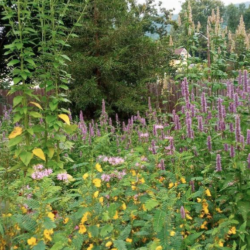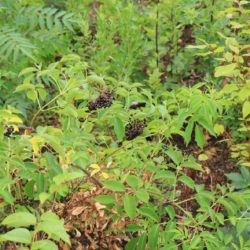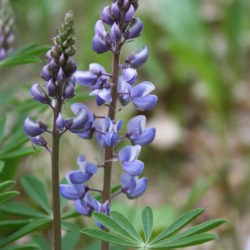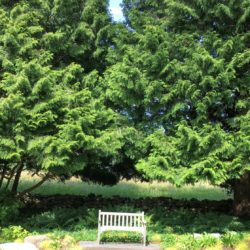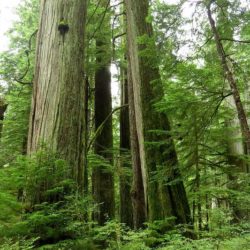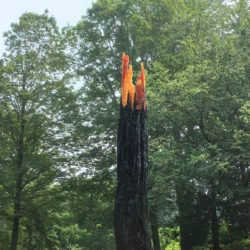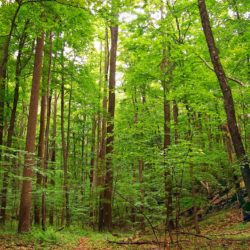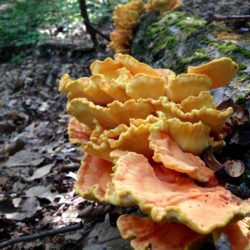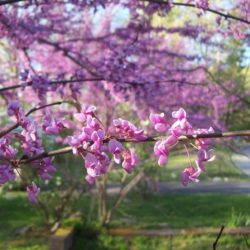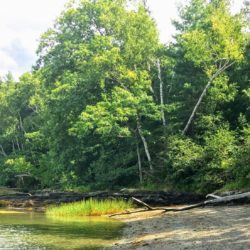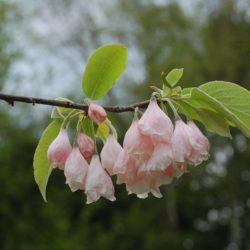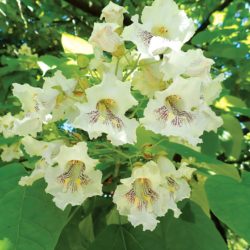Tips, Tricks, and Techniques Written by: ELA Staff Zach McElgunn and Amy Nyman, Horticulture Outreach Manager, New England Botanic Garden at Tower Hill This month, ELA takes some quick tips,…
Trees
Myawaki Forest in Cambridge, Mas
MYAWAKI FOREST IN CAMBRIDGE, MASS. Written by: Leslie Duthie It is a beautiful 50′ circle of green in the dry park. Despite the severe drought, the trees look good and…
Restoring a Pitch Pine-Oak Upland Forest at Norcross Wildlife Sanctuary
Restoring a Pitch Pine-Oak Upland Forest at Norcross Wildlife Sanctuary Written by: Dan Wilder, Director of Wildlife Ecology, Norcross Wildlife Foundation Norcross Wildlife Foundation is located in south-central Massachusetts and…
How and Why Trees Die After Planting
By Norm Helie
Many trees die during the first season at the new site. Watering transplanted trees is not the same as watering crops or a perennial garden. Small annual and perennial plant root systems require less oxygen than the delicate fine root systems of the tree.
Finding Mother Earth
By Suzanne Simard
Working to solve the mysteries of what made the forests tick, and how they are linked to the earth and fire and water, made me a scientist. I watched the forest, and I listened. I followed where my curiosity led me, I listened to the stories of my family and people, and I learned from the scholars. I poured everything I had into becoming a sleuth of what it takes to heal the natural world.
Conservation Pruning Concepts
By Norman Helie
The next time you stroll through your favorite tree-lined street, park, or woods, consider yourself a part of the tree canopy. As a natural interpreter and contributor, you meditate on your surroundings. Trees need our help! Consider trees as large extensions of the organic layer under your feet, which puts you right inside their strategic world.
Tree Decline, Dieback, and Death
By Norm Helie
There is considerable decline, dieback, and death of many tree species in New England and throughout the country. Many professionals focus their attention on the final stages of a tree’s life, but tree health can’t be determined by outward appearance and general foliar analysis. Environmental and ecological studies must consider tree life history.
Think Like a Forest
By Anna Failkoff
Forest trees are not singular specimens but are interdependent players in a dynamic natural community. The tree canopy casts critical shade, moderates moisture and temperature, drops leaf litter to help build living soil, and provides sustenance for a diversity of life on roots, trunks, branches and leaves. Using forest ecosystems for inspiration, we can bring maximal biodiversity, resilience and biomass back into human landscapes.
Notable Natives: Large Shrubs and Small Trees
by Sarah Middeleer
Proponents of ecological gardening are urging gardeners to reduce lawn areas and add native plants. Native shrub borders are lower maintenance than perennial borders, making them an excellent solution to this challenge. These plants often provide multi-season interest, including showy flowers, fruit, and fall foliage. Perhaps their best feature is the habitats and food they offer birds and pollinators.
Reconnecting With The Forest
By Dr. Thomas RaShad Easley
How can we reconnect with the forest as well as ourselves, regardless of our community makeup? How can we steward forests as a resource in a neutral manner? We can all find ways to invite others into forested land by looking through a relationship lens rather than a personal ideal lens.
Why Aren’t These Plants in Every Garden? Three Great Plants to Know and Grow
by Carolyn Summers
Throughout her career working with people, plants, and landscapes, author/designer and gardener extraordinaire Carolyn Summers has often been puzzled by the lack of interest in certain plants that she finds exceptionally useful. These plants bridge the gap that sometimes exists between what humans want and what wildlife needs. Carolyn introduces us to three underused plants that are a must-have for native gardeners.
Planting Native Shade Trees
by Julia Frederick
Shade trees are more important than ever as we face rapid development and suburban sprawl, deforestation, and desertification. These gentle giants help combat rising temperatures, habitat loss and declining air and water quality. Additionally, native canopy trees provide abundant food and shelter for insects, amphibians, birds, and mammals.

